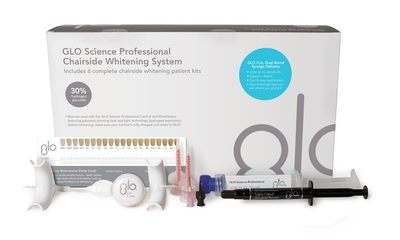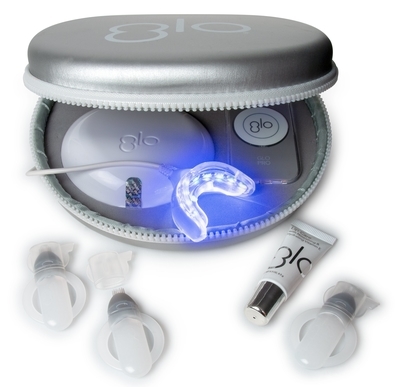
31 Jul Teeth Whitening – Your Guide to a Whiter Smile
We all want a whiter smile, but it’s a lot easier said than done. Staying cavity-free is one thing. Keeping your teeth pearly white is a much greater challenge. That’s why we created this guide—so that you know the source of your stained teeth as well as your options for getting the smile you deserve!
Yellow teeth are often the result of drink stains and aging. To remove stains, you’ll need a peroxide whitening solution that you use at home or is administered by your dentist. You should talk to your dentist before beginning any teeth whitening system. They’ll be able to give you recommendations and tell you whether you’re a good candidate or not.
To better understand teeth whitening, we’ll look at:
- Possible reasons why your teeth are stained
- The basics of teeth whitening
- If teeth whitening is safe or not
You have a lot of options available to get a whiter smile. Continue reading to learn how you can create a plan with your dentist to get a smile that you’ll be proud of!
I brush every day. Why aren’t my teeth white?
Even those with the best oral health can struggle with keeping a whiter smile. You may think that you’re doing something wrong with your daily brushing routine, but that’s not necessarily the case. The truth is that there can be multiple reasons for stained teeth beyond not brushing, flossing, or getting regular cleanings.
The liquids you drink are some of the most common reasons for stained teeth. Do you regularly drink coffee, tea, or red wine? If so, then you may be your own worst enemy when it comes to teeth stains. These types of drinks contain chromogens, which are harsh color pigments that attach to your enamel and lead to stains.
Another common culprit is the aging process. As you get older, the outer layer (enamel) of your teeth becomes thinner due to years of brushing. This can eventually expose dentin, which is a softer, more yellowish layer below the enamel.
Tobacco use is as bad for your teeth as it is for your overall health. Tobacco contains tar and nicotine which causes persistent teeth staining. While tar is naturally dark, nicotine doesn’t become a problem until it’s exposed to oxygen.
Medications and certain medical treatments are surprising sources of teeth stains. This includes:
- High blood pressure medicine
- Antipsychotic medication
- Antihistamines
- Chemotherapy
- Radiation directed at the head and neck
Medicine-related teeth stains aren’t limited to adults, either. Exposure to antibiotics such as doxycycline and tetracycline as a baby or even in the womb can lead to discolored teeth in adulthood.
Dental or oral trauma can also result in discolored teeth. Your body’s reaction to a mouth injury is to produce more dentin, which results in darker, more yellowish teeth.
Teeth Whitening: The Basics
There’s more to getting a whiter smile than buying the first teeth whitening kit you see at the store. There are tons of teeth whitening products out there, as well as stain removal services provided by your dental care provider. Keep reading to learn the basics so you can get the best teeth whitening possible!
How does teeth stain removal work?
When it comes to teeth whitener, you have two bleaching agents to choose from—carbamide peroxide or hydrogen peroxide. These bleaching agents are able to break stains down and make them much weaker, resulting in whiter teeth. Concentrations of peroxide will depend on whether you bleach your teeth at home or opt to see a teeth whitening dentist.
Teeth whitening products can be broken down into at-home or in-office bleaching systems, which also have different amounts of bleaching agent. At-home whitening systems contain somewhere between 3 and 20% of hydrogen or carbamide peroxide. In-office whitening systems will contain between 15 and 43% of peroxide.
At-Home Teeth Whitening
You’ll have a lot more choices with at-home whitening systems. These include:
- Whitening toothpastes
- Strips and gels
- Tray-based systems
You’re probably most familiar with whitening toothpastes, which rarely contain bleach. Whatever bleaching agents they do have are quickly washed away when you rinse. More often, they contain mild whitening agents that gently remove stains from your teeth. This results in teeth that are one shade whiter.
Stips and gels are another great at-home option for a whiter smile. These products use a brush or thin strip of material to apply the whitening agent. Expect to use them for 10 to 14 days to get the best results.
Tray-based whiteners use a tray similar to a mouthguard that you would wear in sports. They’re filled with a peroxide bleaching solution and worn anywhere from one to a few hours a day. Expect to use tray-based whiteners for around a month to get the full benefit. They can be bought over the counter, or you can get a custom fit one from your dentist.
In-Office Teeth Whitening
If you want a brighter smile faster then the in-office route is the way to go. These whitening systems are a lot stronger than anything you can buy on your own. On top of that, your dentist will likely make use of light, heat, or a combination of the two to increase the intensity and speed of the process.
In-office dental whitening will require more visits to the dentist. These can take anywhere from 30 to 60 minutes to complete. However, these visits will pay off with teeth that are up to eight shades whiter than before!

Our Recommendation: GLO Teeth Whitening
GLO Science Pro is our favorite tool for whiter teeth. Shorter for “guided light optics,” GLO uses light and warming heat to activate and accelerate their hydrogen peroxide formula. We also offer a take-home GLO treatment to further accelerate your results!
We are proud to be a GLO partner dental practice. With GLO Science Pro, you’ll get a whiter smile in nearly half the time. All it takes is eight sessions that last 16 to 32 minutes. The result will be a lighter shade after your first visit with little to no sensitivity and no rebounding back to a darker shade.

Is teeth whitening safe?
Teeth whitening is safe for most people, but they’re not without their dangers. This is because the bleaching process can cause teeth to become sensitive or be uncomfortable if you already have sensitive teeth. At-home treatments can result in burned or bleached gums.
Always talk to your dentist before starting a teeth whitening system, whether it’s at home or in their office. They will be able to determine if you’re a good candidate for teeth whitening. Those with yellow teeth should be fine. On the other hand, those with brown teeth won’t get as satisfying results.
Final Thoughts
Yellow teeth can occur even when you have the best oral health. The basics of teeth whitening are pretty simple. Teeth whitening solutions contain a form of peroxide that helps whiten your teeth. You can choose to buy a whitening system from your local store or you can opt for in-office whitening for the best results. Whitening your teeth is a safe process as long as you follow directions carefully. Talk to your dentist before starting any whitening process.
Augusta Family Dental has two convenient locations to better serve you. You can contact our Augusta office by calling (706) 863-4567, or schedule an appointment online. You can schedule an appointment with our Hephzibah office by calling (706) 793-3600.

Sorry, the comment form is closed at this time.